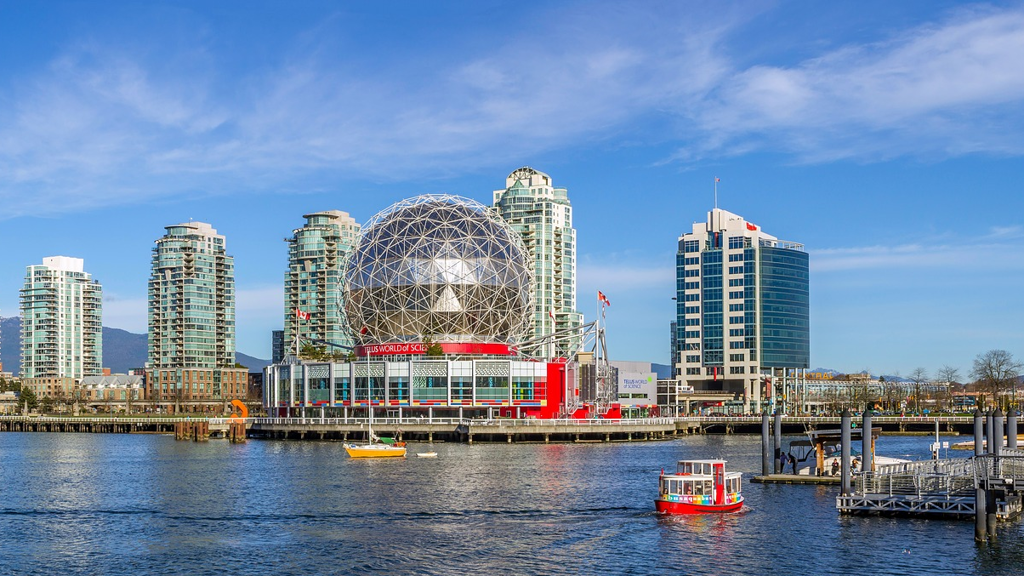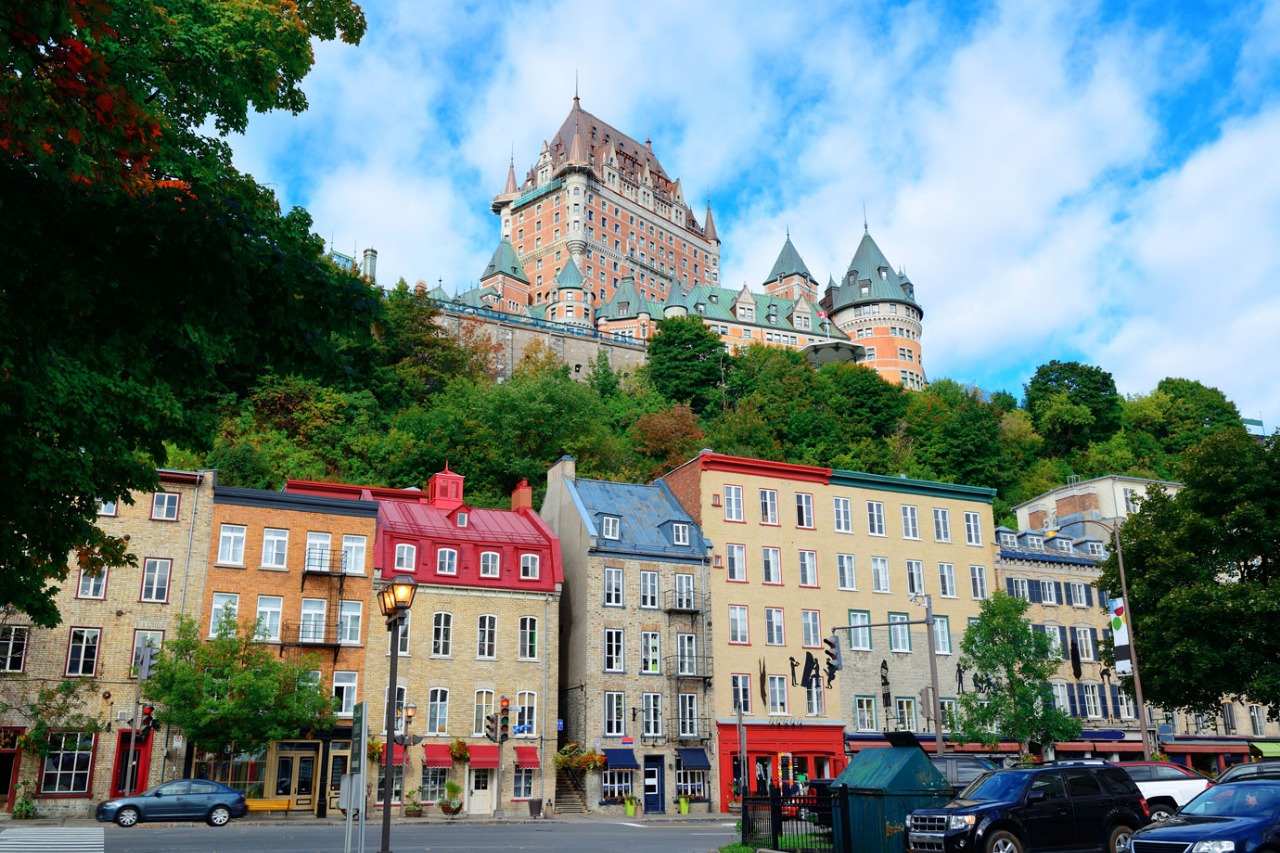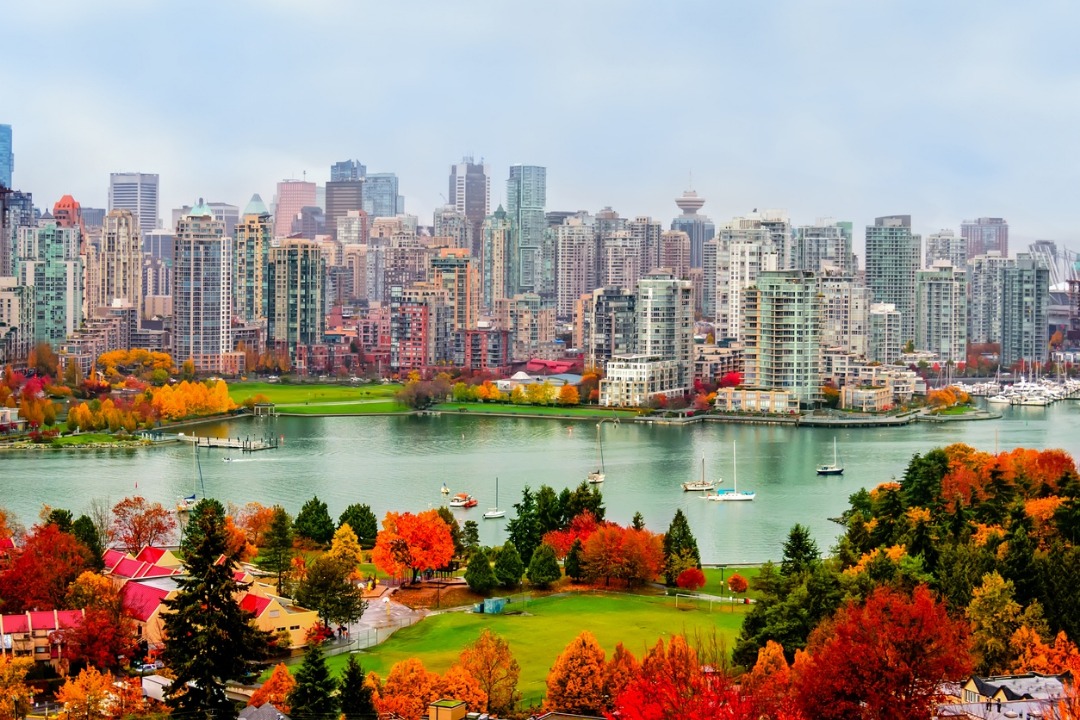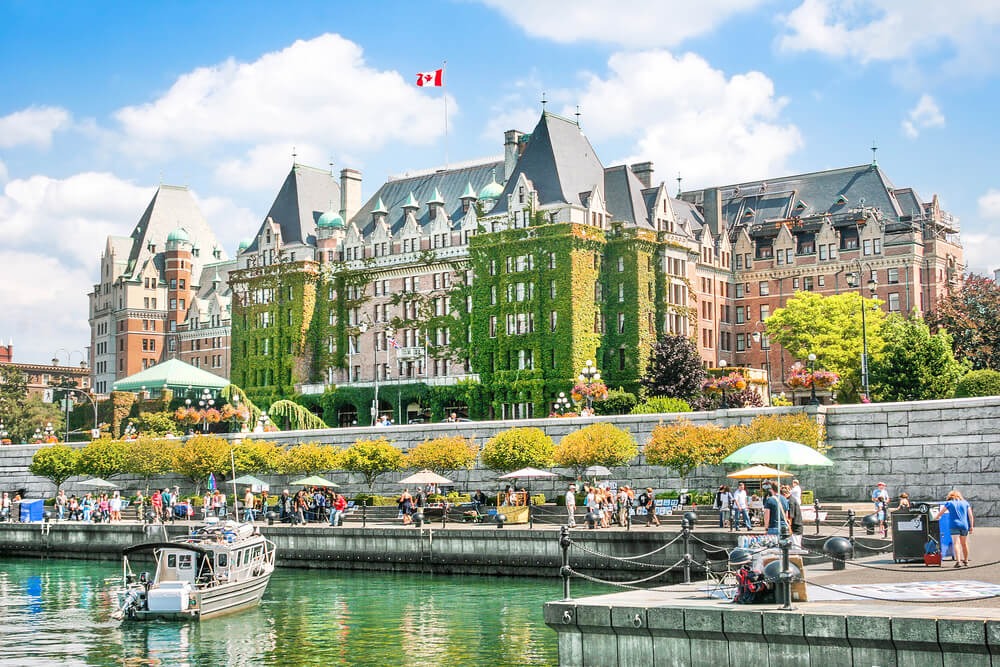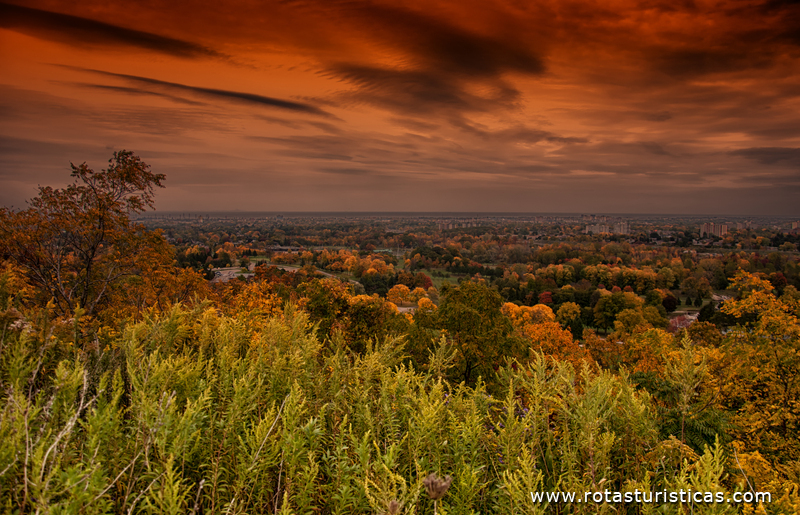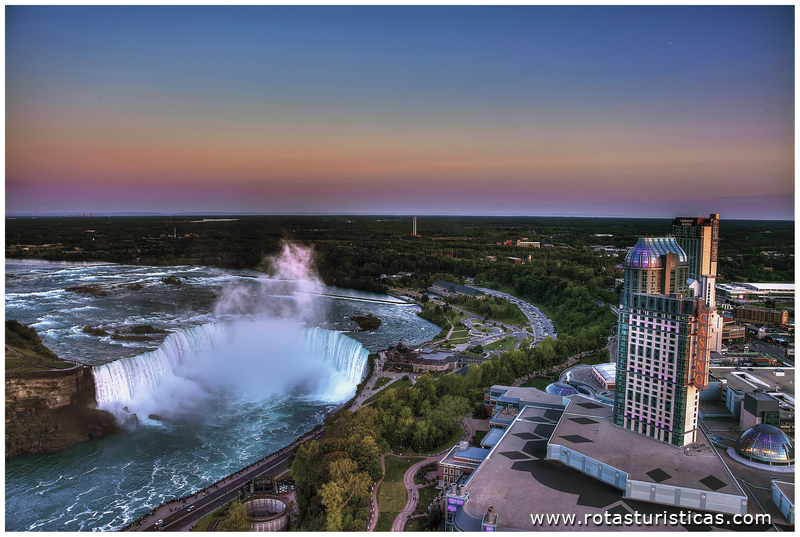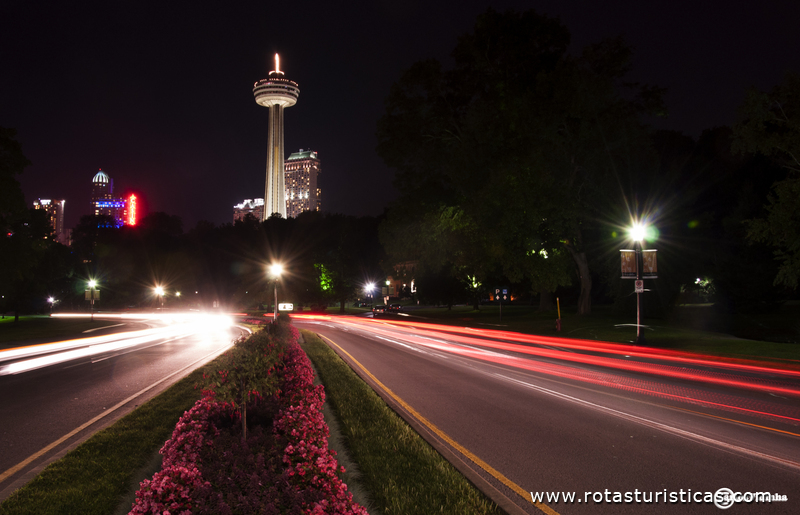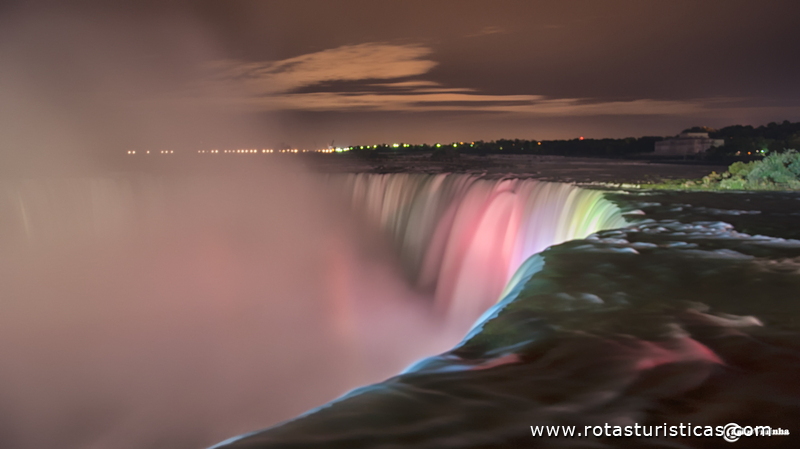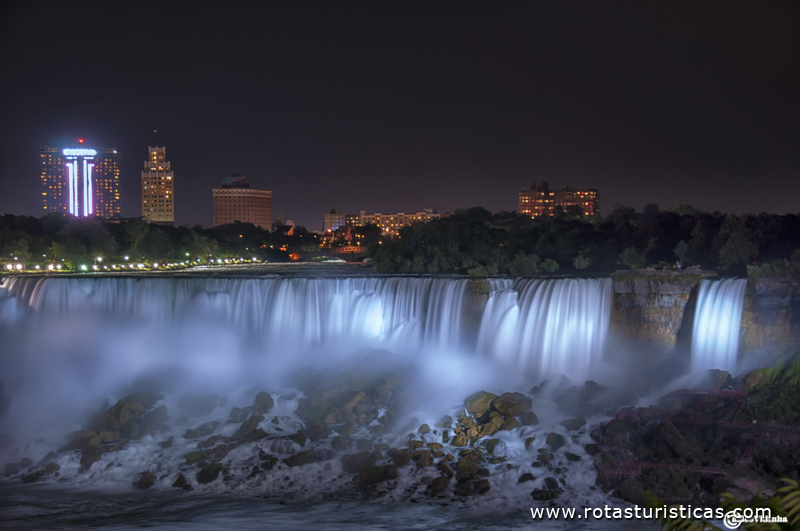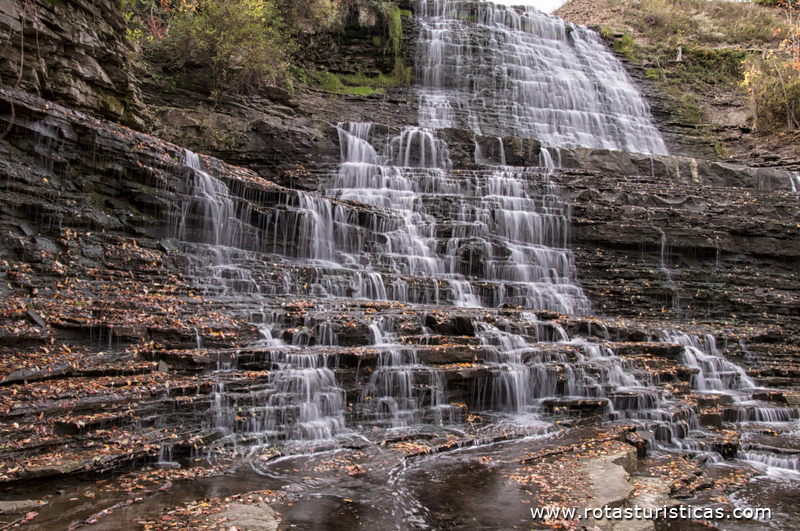Pictures of: Canada
Location map
Airports
Hotels and other Accommodation
Golf Courses
What to visit
Consulates & Embassies
World Nomads
The Travel Insurance with the largest coverage

The Travel Insurance with the largest coverage

Canada
Canada, whose capital is Ottawa, the second largest country in the world, which covers almost 10 million square kilometers from the Atlantic to the Pacific coast and its southern border to the north pole, is a North American country composed of 10 provinces and three territories located in the northern part of the continent, stretches from the Atlantic to the Pacific and to the north in the Arctic Ocean.
Canada is the second largest country in the world in total area, and its common border with the United States is the longest land border in the world shared by the same two countries.
The land that is now Canada has been inhabited for millennia by several Aboriginal peoples.
From the late 15th century, expeditions of British and French colonial explorers were established, on the Atlantic coast of the region.
The population has been growing steadily over the years, the territory has been explored and new autonomous colonies of the Crown have been established. On July 1, 1867, three federated colonies formed a federal authority that established Canada under the British Law of North America of 1867.
Canada is a federal parliamentary democracy and a constitutional monarchy, with Queen Elizabeth II as head of state.
The country is officially bilingual at the federal level. It is one of the most ethnically diverse and multicultural nations in the world, the product of large-scale immigration from many countries, with a population of approximately 35 million.
Its advanced economy is one of the largest in the world, relying mainly on its abundant natural resources and well-developed trade networks.
Canada's long and complex relationship with the United States has had a significant impact on its economy and culture.
Canada is the second largest country in the world in total area, and its common border with the United States is the longest land border in the world shared by the same two countries.
The land that is now Canada has been inhabited for millennia by several Aboriginal peoples.
From the late 15th century, expeditions of British and French colonial explorers were established, on the Atlantic coast of the region.
The population has been growing steadily over the years, the territory has been explored and new autonomous colonies of the Crown have been established. On July 1, 1867, three federated colonies formed a federal authority that established Canada under the British Law of North America of 1867.
Canada is a federal parliamentary democracy and a constitutional monarchy, with Queen Elizabeth II as head of state.
The country is officially bilingual at the federal level. It is one of the most ethnically diverse and multicultural nations in the world, the product of large-scale immigration from many countries, with a population of approximately 35 million.
Its advanced economy is one of the largest in the world, relying mainly on its abundant natural resources and well-developed trade networks.
Canada's long and complex relationship with the United States has had a significant impact on its economy and culture.
Tourism
Canada has a large domestic and foreign tourism industry. The second largest country in the world, Canada's incredible geographic variety is a major tourist attraction. Much of Canada's tourism is centered around four major metropolitan areas of Canada, Toronto, Montreal, Vancouver, Ottawa and, known for its culture, diversity, as well as the many national parks and historical sites.
Canada presents tourist and cultural attractions that arouse great interest in the world tourism scene. There are several museums, parks, theaters, historical monuments, art galleries, historical buildings and much more.
Outdoor adventure and ecotourism, cultural tourism, tourism and heritage. All these types of tourism can be found all over Canada, and all are a part of the tertiary sector, it is the fastest growing and the largest type of tourism in Canada.
The natural outdoor environment features features for hard and light adventure tourism to enjoy the beautiful scenery usually outdoors. Such activities as hiking, backpacking, rock climbing, rafting, canoeing, kayaking, diving, nature study, wildlife viewing, downhill skiing, snowmobiling, hunting, fishing, and much more can all be enjoyed in all Canadian provinces and territories .
Cultural tourism is also a highly prized sector in the Canadian tourism industry.
Canada has unique opportunities to explore. In addition to urban tourism, indigenous communities have significant opportunities in tourism, particularly in preserving and celebrating their culture and values.
The population of Canada is made up of diverse cultures from around the world. Celebrating and demonstrating people's culture is a great opportunity for tourism whether in museums, galleries, performing arts, festivals and events.
Heritage tourism within Canada is demonstrated through countless forests, wildlife in provincial and national parks.
Canada works hard to conserve and protect these ecosystems so that everyone can have the opportunity to continue to observe and learn from them for as long as possible.
National historical museums depict a unique history. The opportunity to cruise in freshwater lakes.
An example of the above is the Midland region which has one of Canada's great national parks and is known as a nature center. Winters offer snowmobile trails, cross-country skiing, snowshoeing and ice fishing.
Golf, theater, outdoor art galleries and major environmental centers among so many.
The advantage of everything described above is that many types of accommodation, bus services, boat, reservations for special receptions and tours, dinner cruises and group excursions and all kinds of meals are available including shopping and other services.
Canada presents tourist and cultural attractions that arouse great interest in the world tourism scene. There are several museums, parks, theaters, historical monuments, art galleries, historical buildings and much more.
Outdoor adventure and ecotourism, cultural tourism, tourism and heritage. All these types of tourism can be found all over Canada, and all are a part of the tertiary sector, it is the fastest growing and the largest type of tourism in Canada.
The natural outdoor environment features features for hard and light adventure tourism to enjoy the beautiful scenery usually outdoors. Such activities as hiking, backpacking, rock climbing, rafting, canoeing, kayaking, diving, nature study, wildlife viewing, downhill skiing, snowmobiling, hunting, fishing, and much more can all be enjoyed in all Canadian provinces and territories .
Cultural tourism is also a highly prized sector in the Canadian tourism industry.
Canada has unique opportunities to explore. In addition to urban tourism, indigenous communities have significant opportunities in tourism, particularly in preserving and celebrating their culture and values.
The population of Canada is made up of diverse cultures from around the world. Celebrating and demonstrating people's culture is a great opportunity for tourism whether in museums, galleries, performing arts, festivals and events.
Heritage tourism within Canada is demonstrated through countless forests, wildlife in provincial and national parks.
Canada works hard to conserve and protect these ecosystems so that everyone can have the opportunity to continue to observe and learn from them for as long as possible.
National historical museums depict a unique history. The opportunity to cruise in freshwater lakes.
An example of the above is the Midland region which has one of Canada's great national parks and is known as a nature center. Winters offer snowmobile trails, cross-country skiing, snowshoeing and ice fishing.
Golf, theater, outdoor art galleries and major environmental centers among so many.
The advantage of everything described above is that many types of accommodation, bus services, boat, reservations for special receptions and tours, dinner cruises and group excursions and all kinds of meals are available including shopping and other services.
Currency
Canadian Dollar
Official language
French and English.
Gastronomy
Canadian gastronomy is practically all originating in Canada.
The most representative is the local cheese called turnip and used in soups and meat stews.
There are also different types of pumpkins, corn, beans and rice, which usually accompany bison meats, deer and other wild animals.
Canada is the second largest country in the world, so its diversity is large, mainly in French, British and native cultures, with the French side represented in Montreal, Quebec and the British side represented by Toronto, Ottawa and Vancouver . There are many recipes with beef, lamb, poultry such as ducks and geese and many sea and freshwater fish, species such as cod and salmon.
Canada is also famous for sausages and canned meat, ham and bacon.
In Canada, one can not speak of a culinary culture across the country, because each region has a special culinary tradition that uses the best of the earth's products giving them a personal touch.
In large cities it is possible to find a wide representation of international cuisine (Chinese, Caribbean, Italian, etc.).
The French part of Canada, Quebec and Montreal offers the opportunity to enjoy French cuisine in many restaurants. In other parts of the country you can enjoy dishes of the highest quality and most of the original recipes developed by the Aborigines.
Coastal regions of Canada have excellent seafood, especially in British Columbia. While in the prairies and inland regions the main product is meat.
The most representative is the local cheese called turnip and used in soups and meat stews.
There are also different types of pumpkins, corn, beans and rice, which usually accompany bison meats, deer and other wild animals.
Canada is the second largest country in the world, so its diversity is large, mainly in French, British and native cultures, with the French side represented in Montreal, Quebec and the British side represented by Toronto, Ottawa and Vancouver . There are many recipes with beef, lamb, poultry such as ducks and geese and many sea and freshwater fish, species such as cod and salmon.
Canada is also famous for sausages and canned meat, ham and bacon.
In Canada, one can not speak of a culinary culture across the country, because each region has a special culinary tradition that uses the best of the earth's products giving them a personal touch.
In large cities it is possible to find a wide representation of international cuisine (Chinese, Caribbean, Italian, etc.).
The French part of Canada, Quebec and Montreal offers the opportunity to enjoy French cuisine in many restaurants. In other parts of the country you can enjoy dishes of the highest quality and most of the original recipes developed by the Aborigines.
Coastal regions of Canada have excellent seafood, especially in British Columbia. While in the prairies and inland regions the main product is meat.
Weather
Due to its geographic location, the weather in Canada varies dramatically depending on the location within the country. One can literally find skiing in the Rocky Mountains one day, and enjoy a round of golf on the Cabot Trail in the next!
Spring
The arrival of spring varies throughout the country. You can generally expect the weather to be warmer in April, although some areas may experience spring even earlier. In Nova Scotia, average temperatures vary in spring from 1 ° C (34 ° F) in late March to 17 ° C (63 ° F) in early June.
Summer
Canadian summers bring warmth to many regions of the country, especially in the central and midwestern provinces.
Between June and August, you will find plenty of outdoor time for hiking, swimming or just to be on a Nova Scotia beach. The Nova Scotia sea in summer is generally of moderate temperature, ranging from 14˚C (57˚F) to 28˚C (82˚F).
Autumn
In autumn temperatures in Nova Scotia generally range between 5 ° C (41 ° F) and 20 ° C (68 ° F), making for pleasant days and cool nights.
Winter
Finally in winter, late December, much of Canada becomes one of the wonders of winter, covered by a layer of snow. There are exceptions, especially on the west coast, where snow is more rare.
In Nova Scotia, the same ocean currents that maintain their moderate summers also do the same in winter. Temperatures typically range from -20 ° C (-4 ° F) to 5 ° C (41 ° F).
The snowfall varies from year to year, but one can expect enough to go through the mountains of skiing or admire the snow-covered landscape with snowshoes, cross-country skiing, or on a sleigh ride.
Spring
The arrival of spring varies throughout the country. You can generally expect the weather to be warmer in April, although some areas may experience spring even earlier. In Nova Scotia, average temperatures vary in spring from 1 ° C (34 ° F) in late March to 17 ° C (63 ° F) in early June.
Summer
Canadian summers bring warmth to many regions of the country, especially in the central and midwestern provinces.
Between June and August, you will find plenty of outdoor time for hiking, swimming or just to be on a Nova Scotia beach. The Nova Scotia sea in summer is generally of moderate temperature, ranging from 14˚C (57˚F) to 28˚C (82˚F).
Autumn
In autumn temperatures in Nova Scotia generally range between 5 ° C (41 ° F) and 20 ° C (68 ° F), making for pleasant days and cool nights.
Winter
Finally in winter, late December, much of Canada becomes one of the wonders of winter, covered by a layer of snow. There are exceptions, especially on the west coast, where snow is more rare.
In Nova Scotia, the same ocean currents that maintain their moderate summers also do the same in winter. Temperatures typically range from -20 ° C (-4 ° F) to 5 ° C (41 ° F).
The snowfall varies from year to year, but one can expect enough to go through the mountains of skiing or admire the snow-covered landscape with snowshoes, cross-country skiing, or on a sleigh ride.
Documentation
American citizens and permanent residents entering Canada by land are required to possess the necessary documentation and meet other criteria before being allowed to enter the Country.
Entry into Canada is determined solely by the Canadian Border Services Agency (CBSA) employees under Canadian law.
Visitors are required to have the necessary travel documentation and be in good health. If requested, they must have an official connection with their country of origin. Such a link includes a job, home and family.
They must also inform the immigration officer satisfactorily that they will leave Canada at the end of their visit. Visitors must provide proof of sufficient financial sustainability at the time of their visit.
All items belonging to the visitor, including the vehicle (if at land border), are subject to inspection by the CBSA.
Canadian law requires that all persons entering Canada must have proof of citizenship and identity.
For US citizens, a valid US passport or passport card is preferred, despite a birth certificate, naturalization certificate, citizenship certificate, or other document proving American citizenship along with an identity document issued by the government with photo (such as driving license) is acceptable to establish identity and nationality.
Tourist visa
A Canadian temporary resident visa often referred to as a Canadian tourist visa or visitor visa in Canada is a temporary Canadian immigration option allowing tourists to visit Canada for a maximum of six months.
A Canadian tourist visa of this type is required for nationals of some countries when they visit the country.
In Canada, visas of this type do not offer permanent residence or the opportunity to apply for Canadian citizenship.
The visiting visas that are issued do not allow work, and the visitor will have to leave the country before the deadline of the respective visa.
It is advisable to contact Canada's consular services in the country of origin of the tourist in order to know the appropriate procedures for entry into Canada.
Entry into Canada is determined solely by the Canadian Border Services Agency (CBSA) employees under Canadian law.
Visitors are required to have the necessary travel documentation and be in good health. If requested, they must have an official connection with their country of origin. Such a link includes a job, home and family.
They must also inform the immigration officer satisfactorily that they will leave Canada at the end of their visit. Visitors must provide proof of sufficient financial sustainability at the time of their visit.
All items belonging to the visitor, including the vehicle (if at land border), are subject to inspection by the CBSA.
Canadian law requires that all persons entering Canada must have proof of citizenship and identity.
For US citizens, a valid US passport or passport card is preferred, despite a birth certificate, naturalization certificate, citizenship certificate, or other document proving American citizenship along with an identity document issued by the government with photo (such as driving license) is acceptable to establish identity and nationality.
Tourist visa
A Canadian temporary resident visa often referred to as a Canadian tourist visa or visitor visa in Canada is a temporary Canadian immigration option allowing tourists to visit Canada for a maximum of six months.
A Canadian tourist visa of this type is required for nationals of some countries when they visit the country.
In Canada, visas of this type do not offer permanent residence or the opportunity to apply for Canadian citizenship.
The visiting visas that are issued do not allow work, and the visitor will have to leave the country before the deadline of the respective visa.
It is advisable to contact Canada's consular services in the country of origin of the tourist in order to know the appropriate procedures for entry into Canada.
Health care
No vaccination is required to enter Canada.
Electricity
Canada's electrical power and electrical outlets (plugs and wall outlets) are the same as those in the United States.
The power supply is 110 volts and 60 hertz (cycles per second).
For visitors arriving from countries using different power supply, they should research the types of adapters and transformers required for their devices.
The power supply is 110 volts and 60 hertz (cycles per second).
For visitors arriving from countries using different power supply, they should research the types of adapters and transformers required for their devices.
Other tourist destinations in:
Canada
Canada
Other world tourist destinations
Why to book with BOOK HOTEL OPORTO
The best prices
Our partnerships with the world´s largest operators offer research on the best market prices.
More options
At Rotas Turisticos you can book the hotel, buy the air ticket, book the transfer from the airport to the hotel and vice versa, book the local excursions, rent the car, take travel insurance and consult the places to visit and where to go.
Holiday Tips & Destinations
Hundreds of holiday destinations with all the options that allow you to easily choose the destination that best suits your dream vacation.
BOOK HOTEL OPORTO
Links

